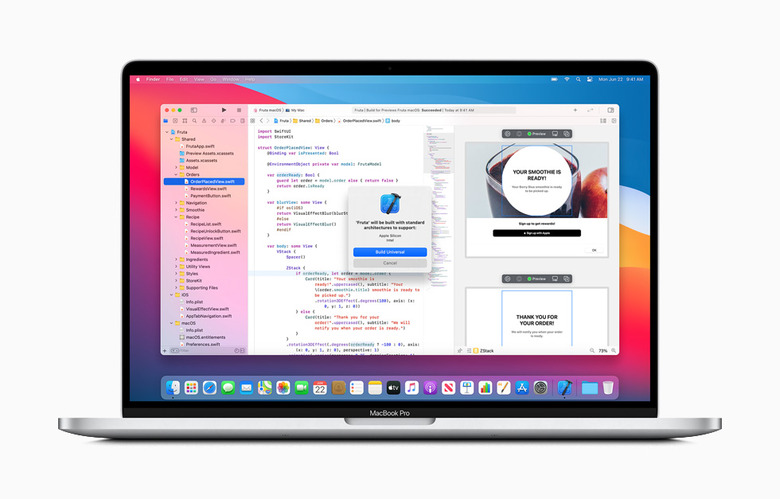Apple's First Laptops With iPhone-Like Chips Are Coming Sooner Than We Thought
- Apple will reportedly release its first ARM-based MacBook Pro and MacBook Air later this year.
- A new supply chain report says that parts and components for a 13-inch MacBook Pro and MacBook Air will begin shipping in the third quarter of 2020.
- Apple already confirmed that the first Mac with Apple silicon will ship before the end of the year.
Apple wasn't able to host a traditional Worldwide Developers Conference this year due to the coronavirus pandemic, but that didn't stop the company from packing its virtual replacement with plenty of reveals and announcements. The typical software updates were present, as we got our first look at iOS 14, iPadOS 14, macOS Big Sur, and more, but the biggest announcement of WWDC20 was that Apple is building its own chips for Macs.
Apple showed off a Mac running on its custom silicon during the live stream, but wasn't quite ready to pull the curtain back on any specific products that would include the hardware. We don't know which Mac will be the first to use Apple silicon, but a report from DigiTimes suggests at least two Apple silicon laptops will ship in 2020.
The report claims that Taiwan's supply chain will begin shipping parts and components for next-generation MacBook and iPad units in the third quarter of this year ahead of multiple new product launches:
As Apple is set to release 13-inch MacBook Pro and MacBook Air, powered by Apple Silicon, by the end of this year, total shipments of MacBook lineup are expected to reach 16-17 million units in 2020 compared to 14.5-15.5 million units shipped a year earlier, the sources estimated.
This lines up with Apple's own press release from WWDC20, in which the company confirmed that the first Mac with Apple silicon would be available by the end of 2020, and the transition from Intel to its own custom processors would be completed within two years. Here's the relevant section of the press release:
Apple plans to ship the first Mac with Apple silicon by the end of the year and complete the transition in about two years. Apple will continue to support and release new versions of macOS for Intel-based Macs for years to come, and has exciting new Intel-based Macs in development.
Apple was unsurprisingly cordial about its decision to part ways with Intel, but shortly after WWDC20, a former Intel engineer offered up a few reasons why the company might have wanted to leave Intel's processors behind during an interview with PC Gamer. "The quality assurance of Skylake was more than a problem," Francois Piednoël said. "It was abnormally bad. We were getting way too much citing for little things inside Skylake. Basically our buddies at Apple became the number one filer of problems in the architecture. And that went really, really bad. When your customer starts finding almost as much bugs as you found yourself, you're not leading into the right place."
